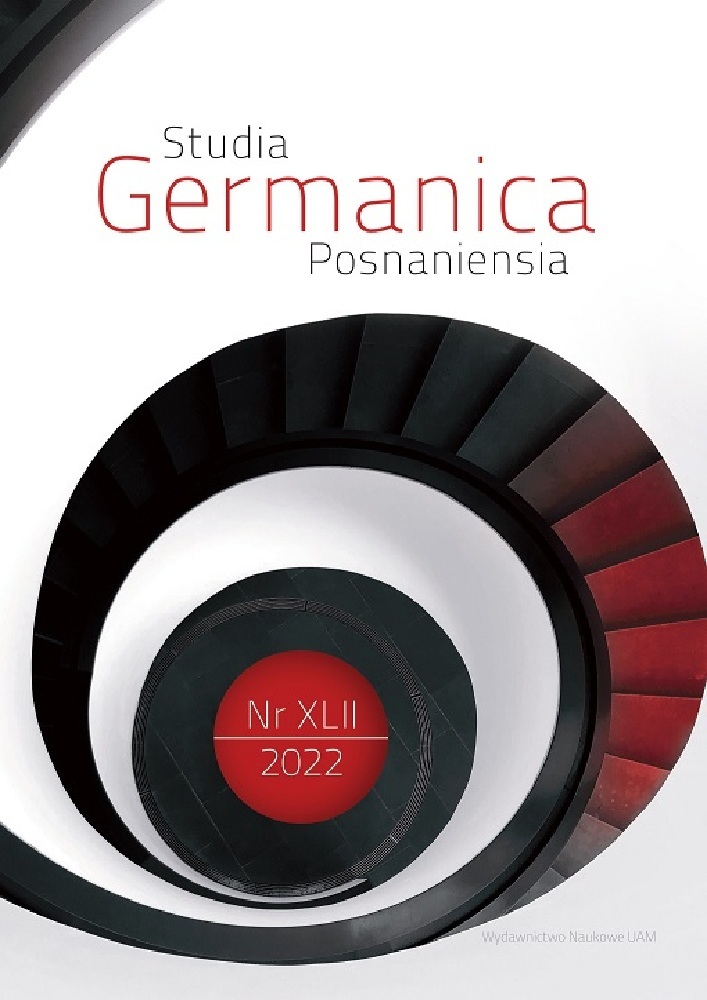Abstract
German director Christoph Schlingensief’s Animatographische Editionen (2004-06) included a series of three geographically-distinct labyrinthine walkthrough installations with a constellation of rooms and rotating platforms, leading to an Animatograph – a spinning carousel of material upon which videos were projected. Diverging from the current tendency in Schlingensief scholarship towards Niklas Luhmann’s systems theory, this paper focuses on the role of material in the Animatograph to show how it sympoietically enfolds autopoietic systems of communication. In particular, I investigate how humans explored the installations’ tight spaces, foul smells, swirling sights and cacophony of sounds, transforming materials and animals into performers. To do so, I derive concepts from Rebecca Schneider, Karen Barad and Donna Haraway to argue that in the encounter with the human, matter looks, touches back, and performs. In addition to providing a compelling site to investigate the intra-active entanglements of humans, animals, and materials in an aesthetic context, Schlingensief’s Animatograph allows us to see the ongoing (re)configuration of these entanglements, putting posthumanist performativity on display and highlighting the aesthetic contributions of the non-human.
References
Animatograph Island Edition – “House of Obsession” Reykjavik, Mai 2005. Schlingensief. Retrieved from https://www.schlingensief.com/projekt.php?id=t052&article=bericht2.
Odins Parsipark«:Schlingensiefs »Animatograph« in Neuhardenberg. Schlingensief. Retrieved from https://www.schlingensief.com/projekt.php?id=t053.
Parsifal – Bayreuther Festspiele, 2004-2007. Schlingensief. Retrieved from https://www.schlingensief.com/projekt.php?id=t044.
Rocky Dutschke, ’68. Schlingensief. Retrieved from https://www.schlingensief.com/projekt.php?id=t005.
Ahrens, G. (2005). Das Universum hat keinen Schatten: Christoph Schlingensief im Gespräch mit Gerhard Ahrens. Schlingensief. Retrieved from https://www.schlingensief.com/downloads/parsipark_programmheft.pdf.
Barad, K. (2003). Posthumanist Performativity: Toward an Understanding of How Matter Comes to Matter. Signs, (28) 3, 801-831. DOI: https://doi.org/10.1086/345321
Barad, K. (2007). Meeting the Universe Halfway: Quantum Physics and the Entanglement of Matter and Meaning. Durham: Duke University Press. DOI: https://doi.org/10.2307/j.ctv12101zq
Berka, R. (2010). Schlingensief’s Animatograph: Time Here Becomes Space. In T. Forrest & A.T. Scheer (Eds.), Christoph Schlingensief: Art without Borders (169-186). Bristol, UK: Intellect Ltd.
Bishop, C. (2012). Artificial Hells: Participatory Art and the Politics of Spectatorship. London, New York: Verso.
Debord, G. (2004). Society of the Spectacle. London: Rebel Press.
Groys, B. (2009). Comrades of Time. e-flux journal. Retrieved from https://www.e-flux.com/journal/11/61345/comrades-of-time/.
Haraway, D.J. (2016). Staying with the Trouble: Making Kin in the Chthulucene. Duke University Press. DOI: https://doi.org/10.2307/j.ctv11cw25q
Hegemann, C. (n.d.). Der erweiterte Wir-Begriff. Ein Gespräch von Carl Hegemann mit Boris Groys am Tag nach der Bayreuther ,Parsifal‘-Premiere, erschienen im Nordbayerischen Kurier. Retrieved from https://www.schlingensief.com/projekt.php?id=t044&article=groyshegemann.
Koch, L. (2014). Christoph Schlingensiefs Bilderstörungsmaschine. Zeitschrift für Literaturwissenschaft und Linguistik, 173, 116-134. DOI: https://doi.org/10.1007/BF03379708
Kovacs, T. (2019). Flowing Space: Theater – Raum – Bewegung bei Christoph Schlingensief und Friedrich Kiesler. In L. Knapp, S. Lindholm & S. Pogoda (eds.) Christoph Schlingensief und die Avantgarde (153-172) München: Fink. DOI: https://doi.org/10.30965/9783846764138_015
Krottenthaler, K. [Director]. (2005). Odins Parsipark [Film]. Filmgalerie 451.
Luhmann, N. (1995). Die Kunst der Gesellschaft. Frankfurt a. M.: Suhrkamp.
Luhmann, N. (1998). Die Gesellschaft der Gesellschaft. Frankfurt a. M.: Suhrkamp.
Rebentisch, J. (2015). Forms of Participation in Art. Qui Parle: Critical Humanities and Social Sciences, 23 (2), 29-54. DOI: https://doi.org/10.5250/quiparle.23.2.0029
Ross, A. (2004). Nausea. A new “Parsifal” at Bayreuth. The New Yorker, August, 11.
Scheer, A.T. (2018). Christoph Schlingensief: Staging Chaos, Performing Politics and Theatrical Phantasmagoria. London, New York: Bloomsbury.
Schlingensief, C. [Director]. 2005. The African Twin Towers – The Ring – 9/11 [Film]. Filmgalerie 451.
Schlingensief, C. & Hegemann, C. (1998) Chance 2000 Wähle dich selbst. Köln: Kiepenheuer & Witsch.
Schneider, R. (1997). The Explicit Body in Performance. London: Routledge.
Todorut, I. (2021). Christoph Schlingensief’s Realist Theater. London: Routledge. DOI: https://doi.org/10.4324/9781003042778
Van der Horst, J. Der Animatograph-Eine “Lebensmaschine” von Christoph Schlingensief. Schlingensief. Retrieved from https://www.schlingensief.com/projekt.php?id=t052&article=theorie.
License
Copyright (c) 2022 Katherine Pollock

This work is licensed under a Creative Commons Attribution-NoDerivatives 4.0 International License.
